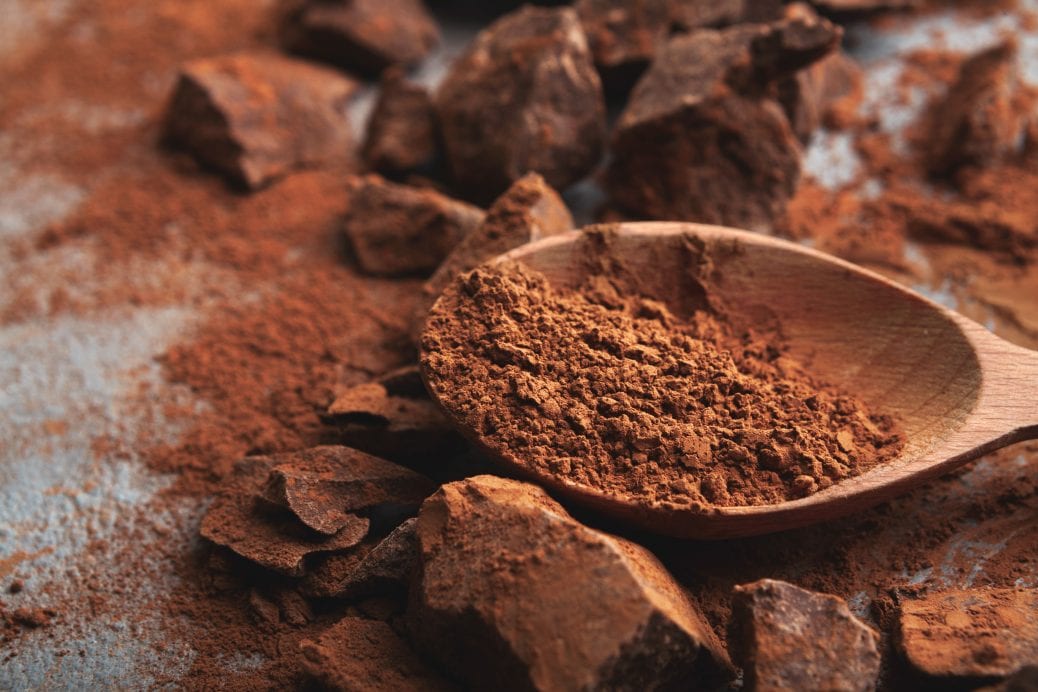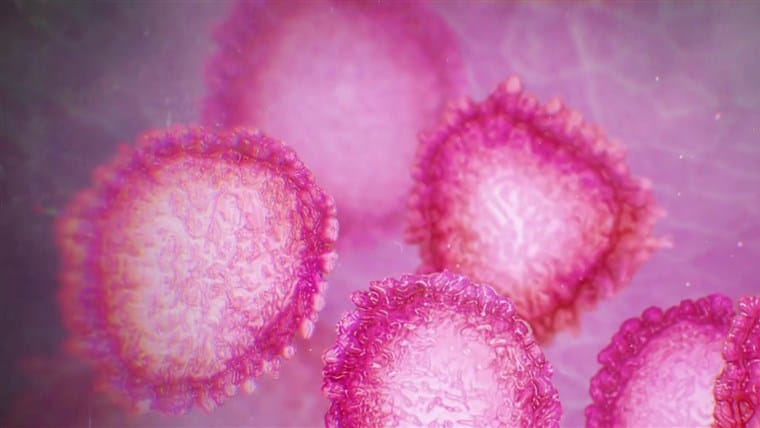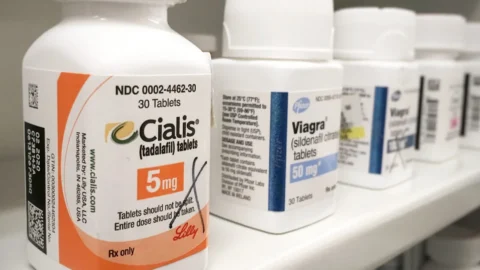Epicatechin is a naturally occurring flavonoid found in highest levels in cocoa and dark chocolate. Other foods containing smaller amounts of Epicatechin are green tea, berries, and red wine, as well as others. Studies suggest a wide range of potential benefits, including antioxidant properties, cardiovascular health, supporting brain function, mitochondrial biogenesis and muscle regeneration, and others. More data suggests it improved performance and body composition. One mechanism by how it achieves that is as a myostatin inhibitor. Researchers are particularly interested to see if it can help prevent sarcopenia, as well as benefit diseases such as muscular dystrophies. It may be of value to athletic populations as well, but more data is needed. Bottom line is, the flavonoid Epicatechin is associated with a wide range of potential benefits – both health and performance related – and likely one reason ingestion of cocoa is beneficial.
As a rule, the epicatechin content in cocoa depends on the type of cocoa and how it’s processed, such as roasting, fermentation, and alkalization also known as “Dutch Processed.” Less processing the better, which is why we use minimally processed organic cocoa in Alpha Joe Coffee Booster. Generally, darker, less processed cocoa retains more epicatechin.
If you’re looking to maximize your intake of epicatechin, choose raw or minimally processed cocoa products and dark chocolate with a higher percentage of cocoa, at least 70% cocoa or above. The optimal amount of Epicatechin has yet to be elucidated in the research, but it does not appear that large amounts are required to see benefits. As always, dose required will vary depending on some variables. Below are several studies that focused on the possible benefits of Epicatechin in age related loss of muscle (sarcopenia), Becker muscular dystrophy, and other topics of interest, for those who want the details:
Studies Of Interest:
“Effects of (−)-epicatechin on molecular modulators of skeletal muscle growth and differentiation.” J. Nutr Biochem. 2013 Oct 18;25(1)
Abstract
Sarcopenia is a notable and debilitating age-associated condition. Flavonoids are known for their healthy effects and limited toxicity. The flavanol (−)-epicatechin (Epi) enhances exercise capacity in mice and Epi-rich cocoa improves skeletal muscle structure in heart failure patients. (−)-Epicatechin may thus, hold promise as treatment for sarcopenia.
We examined changes in protein levels of molecular modulators of growth and differentiation in young vs. old, human and mouse skeletal muscle. We report the effects of Epi in mice and the results of an initial proof-of-concept trial in humans, where muscle strength and levels of modulators of muscle growth were measured. In mice, myostatin and senescence-associated β-galactosidase levels increase with aging, while those of follistatin and Myf5 decrease. (−)-Epicatechin decreases myostatin and β-galactosidase and increases levels of markers of muscle growth. In humans, myostatin and β-galactosidase increase with aging while follistatin, MyoD and myogenin decrease. Treatment for 7 days with (−)-epicatechin increases hand grip strength and the ratio of plasma follistatin/myostatin.
In conclusion, aging has deleterious effects on modulators of muscle growth/differentiation, the consumption of modest amounts of the flavanol (−)-epicatechin can partially reverse these changes. This flavanol warrants its comprehensive evaluation for the treatment of sarcopenia
“Improvement in Skeletal Muscle Strength and Plasma Levels of Follistatin and Myostatin Induced by an 8-Week Resistance Training and Epicatechin Supplementation in Sarcopenic Older Adults.” J Aging Phys Act. 2019 Jun 1;27(3):384-391.
Abstract
To investigate the effects of resistance training and epicatechin supplementation on muscle strength, follistatin, and myostatin in older adults with sarcopenia, a total of 62 males with sarcopenia (68.63 ± 2.86 years) underwent a supervised 8-week randomized controlled trial. Participants were divided into resistance training (RT), epicatechin (EP), resistance training+epicatechin (RT+EP), and placebo (PL) in a double-blind method. A pretest and posttest measurement was conducted. One-way analysis of variance was used to analyze between-group differences. The significantly greatest increase was observed in follistatin, follistatin/myostatin ratio, leg press, and chest press in RT+EP comparing RT, EP, and PL groups, whereas myostatin decreased significantly only in RT+EP and RT groups. However, appendicular muscle mass index and timed up and go test were enhanced significantly in all experimental groups than the PL group (p ≤ .05). Consequently, by comparing the results between three experimental groups, the greatest improvement was detected in the RT+EP group. Therefore, using two interventions simultaneously seems to have a better impact on improving muscle growth factors and preventing the progression of sarcopenia.
“(-)-Epicatechin induces mitochondrial biogenesis and markers of muscle regeneration in adults with Becker muscular dystrophy.” Muscle Nerve. 2021 Feb;63(2):239-249.
Abstract
Introduction: We conducted an open-label study to examine the effects of the flavonoid (-)-epicatechin in seven ambulatory adult patients with Becker muscular dystrophy (BMD).
Methods: Seven participants received (-)-epicatechin 50 mg twice per day for 8 weeks. Pre- and postprocedures included biceps brachii biopsy to assess muscle structure and growth-relevant endpoints by western blotting, mitochondria volume measurement, and cristae abundance by electron microscopy, graded exercise testing, and muscle strength and function tests.
Results: Western blotting showed significantly increased levels of enzymes modulating cellular bioenergetics (liver kinase B1 and 5′-adenosine monophosphate-activated protein kinase). Peroxisome proliferator-activated receptor gamma coactivator-1alpha, a transcriptional coactivator of genes involved in mitochondrial biogenesis and cristae-associated mitofilin levels, increased as did cristae abundance. Muscle and plasma follistatin increased significantly while myostatin decreased. Markers of skeletal muscle regeneration myogenin, myogenic regulatory factor-5, myoblast determination protein 1, myocyte enhancer factor-2, and structure-associated proteins, including dysferlin, utrophin, and intracellular creatine kinase, also increased. Exercise testing demonstrated decreased heart rate, maximal oxygen consumption per kilogram, and plasma lactate levels at defined workloads. Tissue saturation index improved in resting and postexercise states.
Discussion: (-)-Epicatechin, an exercise mimetic, appears to have short-term positive effects on tissue biomarkers indicative of mitochondrial biogenesis and muscle regeneration, and produced improvements in graded exercise testing parameters in patients with BMD.
“Insight on sarcopenic obesity and epicatechin as a promising treatment option.” Diabetes Metab Syndr. 2023 Oct;17(10):102856.
Abstract
Background and aim: Sarcopenic Obesity (SO) in the elderly population is a complex and multifactorial condition which refers to the loss of skeletal muscle mass, strength, and function associated with aging, while obesity involves excessive adipose tissue accumulation. The simultaneous occurrence of these two conditions presents a unique set of challenges to public health and clinical management. This narrative review aims to provide an overview of the use of epicatechin (EC) in the treatment of SO and its related complications.
Method: A survey of studies related to preclinical and clinical evidence of Epicatechin in sarcopenic obesity and its complications was performed in the following database Medline, Scopus, ProQuest, Embase, Web of Science, and Google scholar. Followed by structural activity relationship and pharmacokinetic profile of Epicatechin was discussed in this paper.
Results: The main pharmacological effect of Epicatechin is myostatin inhibition activity which has been described by both in vitro and in vivo studies earlier. The SO is directly correlated with the alteration of Myostatin. The pre-clinical and clinical studies suggest that epicatechin can be a potential candidate in the management of SO and its related complication.
Conclusion: The present review describes the pharmacokinetic profile and structural activity of epicatechin respective to SO and its related complications. The goal of this review is to update the scientific community on the therapeutic potential of epicatechin in SO and age-related factors. Conduction of clinical and pre-clinical trials, also drug dosage optimization may provide with insights on the use of epicatechin in SO.
Will Brink is the owner of the Brinkzone Blog. Will has over 30 years experience as a respected author, columnist and consultant, to the supplement, fitness, bodybuilding, and weight loss industry and has been extensively published. Will graduated from Harvard University with a concentration in the natural sciences, and is a consultant to major supplement, dairy, and pharmaceutical companies.
His often ground breaking articles can be found in publications such as Lets Live, Muscle Media 2000, MuscleMag International, The Life Extension Magazine, Muscle n Fitness, Inside Karate, Exercise For Men Only, Body International, Power, Oxygen, Penthouse, Women’s World and The Townsend Letter For Doctors.
He’s also been published in peer reviewed journals.
Will is the author of the popular e-books, both accompanied by private members forum access , Bodybuilding Revealed & Fat Loss Revealed.
You can also buy Will’s other books on Amazon, Apple iBook, and Barnes and Noble.






